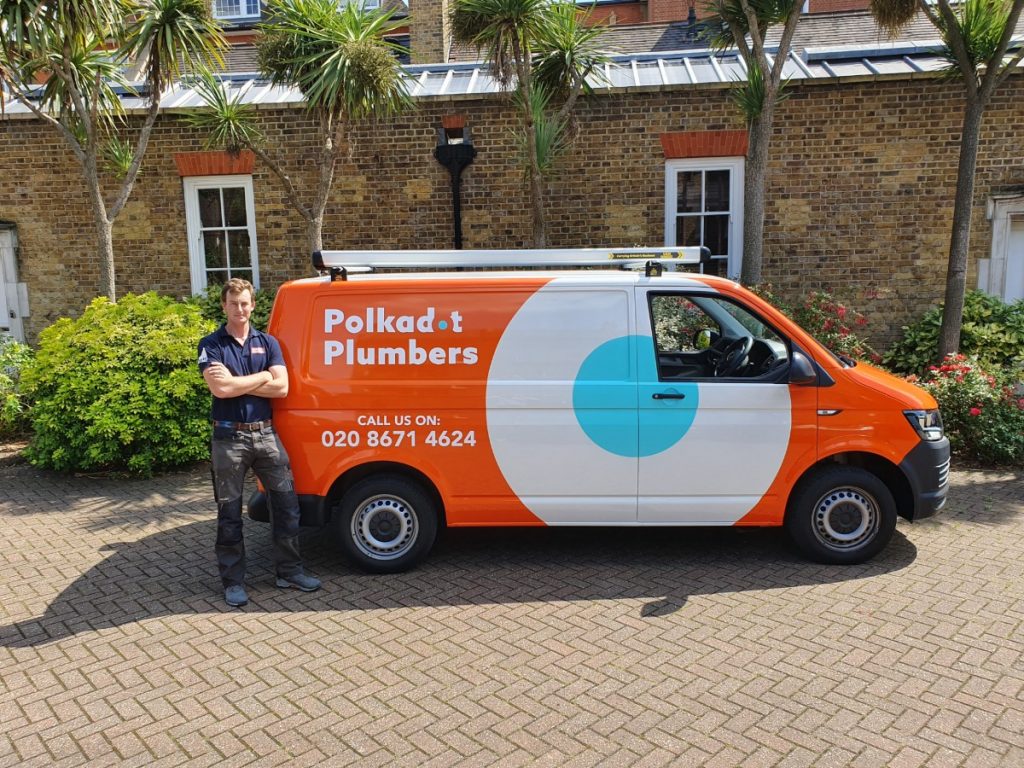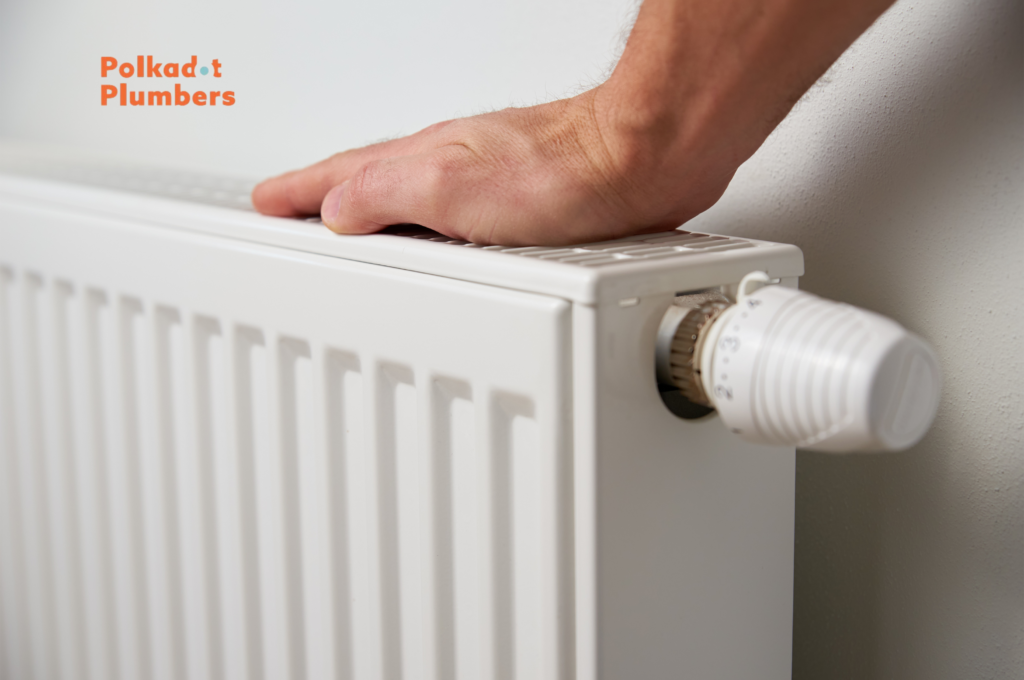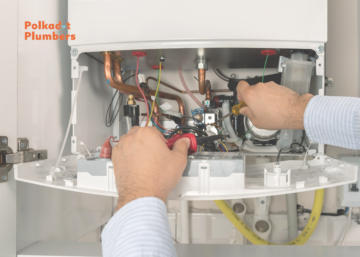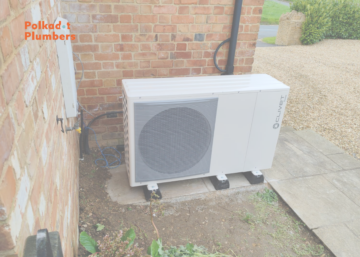Cold spots in your radiator can be a confusing issue. You might wonder why your radiator, designed to keep your space warm, has areas that remain cold.
This common problem can affect the efficiency of your homes heating system and can lead to higher energy bills and a less comfortable living environment.
In this article, we delve into the causes of radiator cold spots. We’ll help you understand why they occur and how they can be fixed.
From trapped air to sludge build-up, we’ll explore the common culprits. We’ll also provide a step-by-step guide on diagnosing and fixing these cold patches.
This guide will equip you with the knowledge to tackle radiator cold spots.
Understanding Radiator Cold Spots
Radiator cold spots are areas on your radiator that remain cold, even when the heating is on. They are often found at the top or bottom of the radiator.
These cold patches can indicate a problem with your heating system. They can reduce the efficiency of your radiator, leading to uneven heating in your space.
So, how does a radiator work? A radiator is part of a central heating system. It uses hot water circulated from a boiler to heat your space.
The hot water enters the radiator and transfers its heat to the metal surface. This heat then radiates into the room, warming it up.
For a radiator to work efficiently, the hot water needs to circulate evenly. This ensures that the entire radiator surface heats up uniformly.
Here are some key points to remember about radiator cold spots:
- They can occur at the top or bottom of the radiator.
- Cold spots can indicate a problem with your heating system.
- They can reduce the efficiency of your radiator.
- Radiators work by circulating hot water evenly.
- Cold spots can disrupt this even heat distribution.
What are the Common Causes of Radiator Cold Spots?
There are several reasons why your radiator might have cold spots. Understanding these causes can help you diagnose and fix the problem.
One common cause is trapped air. Air can get into the system and rise to the top of the radiator. This prevents hot water from filling the radiator fully, causing cold spots at the top.
Another cause is sludge and debris build-up. Over time, rust and other debris can accumulate in the radiator. This can block the flow of hot water, leading to cold patches.
The size and placement of your radiator can also affect its performance. If your radiator is too small for the room, it may not heat the space evenly.
Similarly, if your radiator is placed in an area with poor circulation, it may not distribute heat effectively. This can result in cold spots.
Finally, issues with the central heating system can also cause cold spots. These can include problems with the boiler, pump, or valves.
Trapped Air in Radiators
Trapped air is a common cause of radiator cold spots. Air can enter the system during maintenance or when new water is added.
This air rises to the top of the radiator, creating a barrier that prevents hot water from filling the radiator. This results in cold spots at the top of the radiator.
Bleeding the radiator can release this trapped air, allowing hot water to circulate fully again.
Sludge and Debris Build-Up
Sludge and debris build-up is another common cause of cold spots. Over time, rust and other debris can accumulate inside the radiator.
This build-up can block the flow of hot water, leading to cold patches. Flushing the radiator can help remove this sludge and restore proper circulation.
Radiator Size and Placement Issues
The size and placement of your radiator can also affect its performance. If your radiator is too small for the room, it may not heat the space evenly.
Similarly, if your radiator is placed in an area with poor circulation, it may not distribute heat effectively. This can result in cold spots.
Adjusting the size or placement of your radiator can help resolve these issues.
Diagnosing Cold Spots in Your Radiator
Identifying cold spots in your radiator is the first step towards fixing them. This process is relatively straightforward and can be done by anyone.
You can start by turning on your heating system and letting it run for a while. This will allow the radiators to heat up.
Then, carefully touch the surface of the radiator. Be careful not to burn yourself. If there are cold spots, you will feel a noticeable difference in temperature.
Step-by-Step Guide to Checking for Cold Spots
Here is a simple step-by-step guide to help you check for cold spots in your radiator:
- Turn on your heating system and let it run for about 15-20 minutes. This will allow the radiators to heat up.
- Carefully touch the surface of the radiator. Start from the top and move your hand downwards.
- Feel for any noticeable differences in temperature. If there are cold spots, you will feel areas that are cooler than the rest.
Remember to be careful when touching the radiator. It can get very hot, and you could burn yourself. Always use caution when performing this check.
Fixing the Cold Spots
Once you’ve identified the cold spots, it’s time to fix them. The method you use will depend on the cause of the cold spots.
If the cold spots are due to trapped air, you’ll need to bleed your radiator. If sludge or debris is the culprit, a radiator flush may be necessary.
In some cases, you may need to call a professional. This is especially true if the cold spots are due to more complex issues like a faulty pump or valve.
How to Bleed Your Radiator
Bleeding your radiator is a simple process that can help remove trapped air. You’ll need a radiator key or a flat-blade screwdriver for this task.
Start by turning off your heating system. This is to prevent more air from entering the system while you’re bleeding the radiator.
Next, locate the bleed valve on your radiator. It’s usually at the top. Use your radiator key or screwdriver to slowly turn the valve counterclockwise. You’ll hear a hissing sound as the air escapes.
Flushing Out Sludge: Manual and Power Flush
If sludge or debris is causing the cold spots, you’ll need to flush your radiator. This can be done manually or through a power flush.
A manual flush involves draining the radiator, filling it with a cleaning solution, and then draining it again. This process can be messy and time-consuming, but it’s effective.
A power flush, on the other hand, is a professional service. It involves using a machine to forcefully clean the radiator and the entire heating system. This method is more effective but also more expensive.
Preventing Future Cold Spots
Preventing cold spots in your radiator is all about regular maintenance. By keeping your radiator and heating system in good condition, you can avoid many common issues.
It’s also important to monitor your radiator’s performance. If you notice any changes, such as reduced heat output or strange noises, it’s best to address them immediately.
Remember, prevention is always better than cure. By taking care of your radiator, you can enjoy a warm and comfortable home all year round.
Regular Maintenance and Radiator Care
Regular heating maintenance is key to preventing cold spots. This includes bleeding your radiators regularly to remove trapped air.
You should also flush your radiators periodically to remove sludge and debris. If you’re not comfortable doing this yourself, you can hire a professional.
Finally, make sure to check your heating system’s pressure and adjust it if necessary. A system that’s under or over pressurized can lead to various radiator problems, including cold spots.
The Role of Thermostatic Radiator Valves (TRVs)
Thermostatic Radiator Valves (TRVs) can play a significant role in preventing cold spots. These valves allow you to control the temperature of each radiator individually.
By adjusting the TRVs, you can ensure that each room in your home is heated evenly. This can prevent cold spots caused by uneven heat distribution.
Remember, TRVs are not a substitute for regular maintenance. They are a tool that can help you manage your heating system more effectively.
When to Call a Polkadot Plumbers

While many radiator issues can be fixed at home, there are times when it’s best to call Polkadot. If you’ve tried the solutions outlined in this guide and still have cold spots, it may be time to seek help.
A professional heating engineer can diagnose and fix complex issues. We have the tools and knowledge to handle heating problems that are beyond the scope of the usual DIY fixes.
Remember, it’s better to invest in professional help than to risk damaging your heating system. A well-maintained radiator can provide you with efficient heating for many years.
Summary
Radiator cold spots can be a nuisance, but understanding their causes can help you address them effectively. With regular maintenance and the right approach, you can ensure your radiator works efficiently.
Remember, if the problem persists, don’t hesitate to seek professional help. Your comfort and safety should always be a priority.




